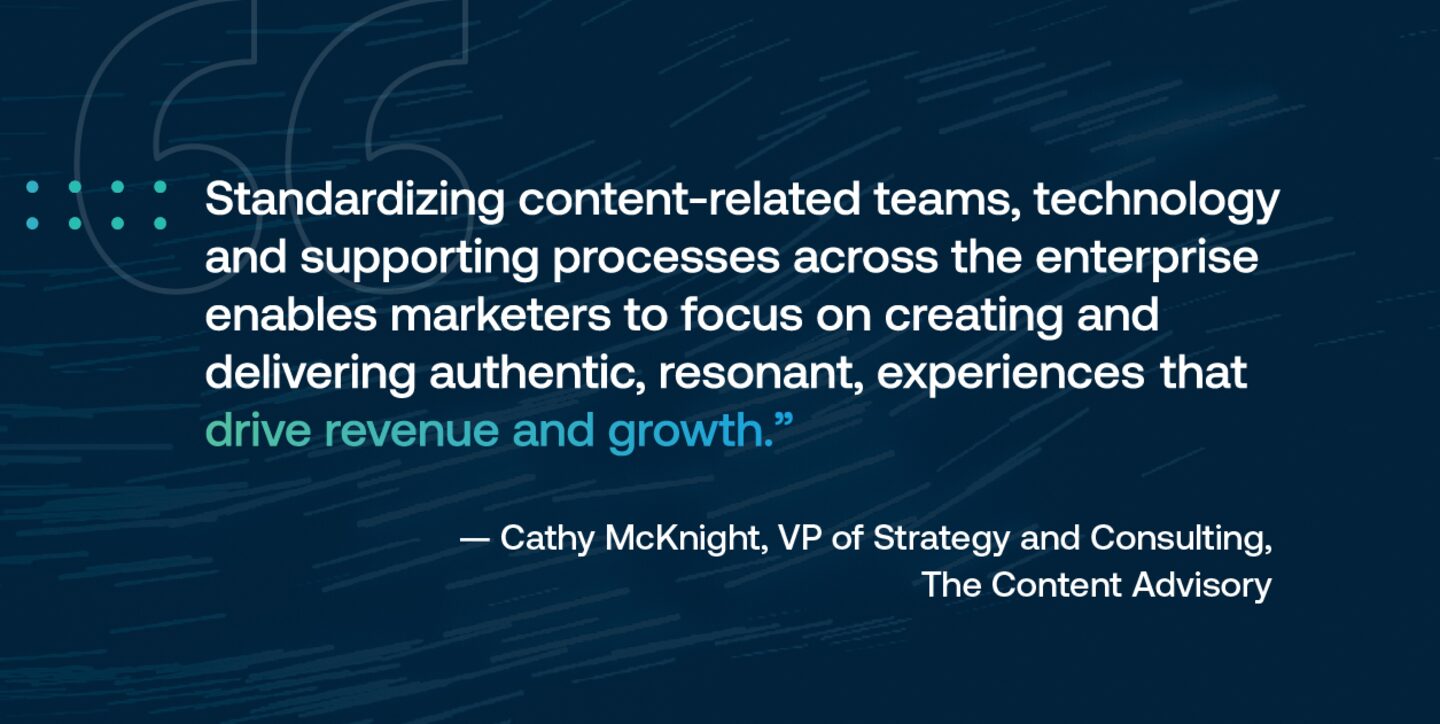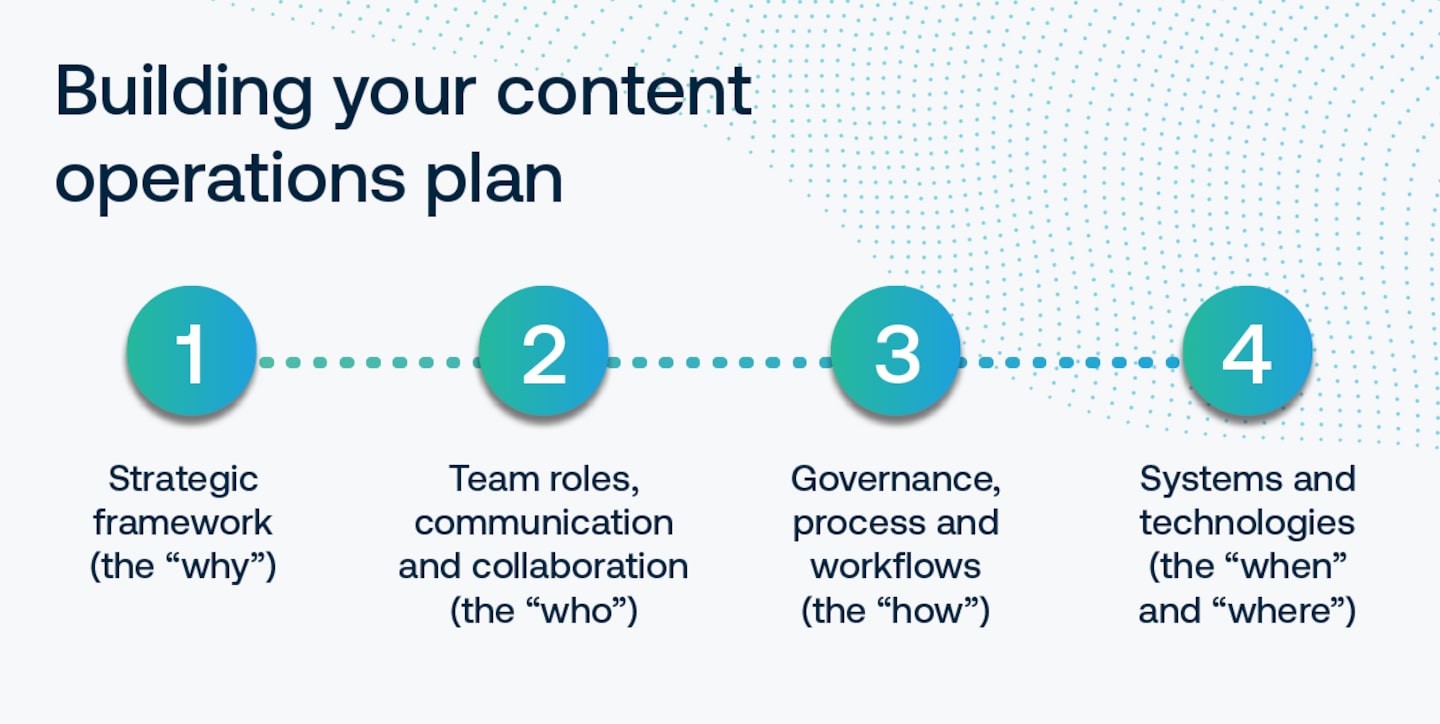What is a content operations plan and why do you need one?

When it comes to delivering context-driven content that engages prospects and builds loyal customers, Arc XP has the technology you need to run your content engine smoothly and effectively. But technology is just one “leg” of the proverbial three-legged stool that makes up a successful content marketing program.
Before considering the tools you’ll need to create that efficient content engine, you first need to make sure you have the other two “legs” of your stool firmly in place:
- The framework to bring your content marketing strategy to life (e.g., your content operations plan) and
- The boots on the ground responsible for making it happen.
In the first piece of our three-part series, we’re looking at content operations planning — why it’s a necessity for today’s B2B marketers and how you can get started.

Why do content marketers need an operational plan?
Before we go into the why, let’s start with the what. Think of content operations as a bird’s-eye view of everything it takes to effectively run your content marketing program — from strategic decision-making and tactical responsibilities to resourcing and performance measurement.
Looking at content development and management from this vantage point can help organizations spot inefficiencies and standardize processes, governance procedures and systems for a more efficient workflow and seamless experience from start to finish. Not to mention ensuring quality and brand consistency across all assets and channels.
Feel very content marketing 101? While content is the soul of nearly every aspect of marketing, sales, product and customer success, it’s surprising to find that Forrester has identified that less than 15% of B2B organizations actually have a mature content operation.
With the ever-growing complexity of marketing channels and the sheer volume of content it takes to not only engage today’s buyers but move them through the funnel, it’s not enough for content marketers to simply understand how to create content and creative media assets. You need to have a firm grasp on how content operations work at scale. That means understanding the content structure, governance and technology needed so that content can be reused, repackaged and leveraged across channels.
The benefits of having a content operations plan
It can be tempting to skip the planning and jump right into content development. However, this strategy — or lack thereof — almost always leads to bigger headaches down the line, especially for enterprise organizations.
An immature content operation not only creates significant waste and lost productivity, but has a negative impact on the customer experience, and ultimately impedes your organization’s ability to meet business goals.
But when you have a strong content marketing strategy working hand-in-hand with a well-thought-out and executed content operations plan, the dots across the siloed ecosystems connect leading to accelerated growth and an optimized customer experience.

Having a content operations plan in place puts B2B marketers in a better position to react to common challenges because it enables:
- Agility to react to the ever-changing shifts in marketplace trends, consumer behaviors, digital technologies and communication standards. With the right guidance in place, you can play ahead of the eight ball to take advantage of every marketing opportunity.
- Resilience to meet changing business conditions head-on as organizations across every industry are doing more with fewer resources. Efficient processes and advanced planning will help your team remain focused and productive when the stress is on.
- Collaboration by creating the clarity and uniformity that eliminates friction from mis-aligned communications and silos, allowing your content marketing program to grow and scale more efficiently.
What should go into your content operations plan
According to the Content Marketing Institute, an effective content operations plan is built around four operational components.

While it does take some time to identify and map out these details, the results are well worth the effort.
Up next: We explore the second “leg” of the content marketing operations stool — the team needed to make the magic happen. In part two of this three-part series we explore the seven essential roles of a content marketing team and how they fit into the broader marketing organization.
Recent resources




